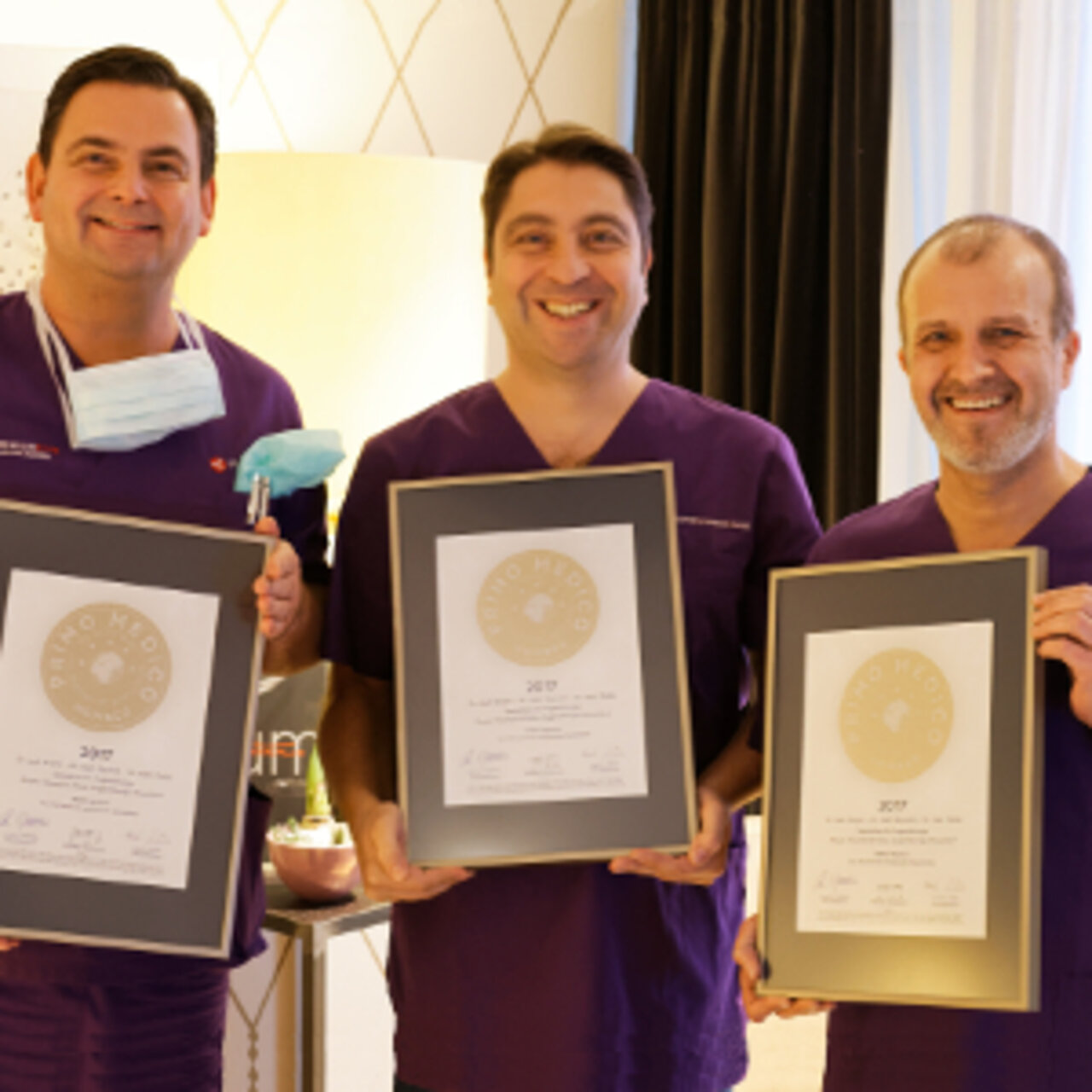Specialists in Macular Foramen
4 Specialists found
Information About the Field of Macular Foramen
What Is Macular Foramen?
A macular foramen is a hole in the macula, the central part of the retina. The retina is the light-sensitive inner layer of the eye. It lines the inside of the eyeball wall and contains sensory cells that transmit light stimuli to the brain. There is a central location in the center of the retina called the macula. This is the area of sharpest vision. A hole in the center of the retina reduces visual acuity.
The macular foramen is usually age-related. The leading cause of its development is age-related changes in the vitreous body. The disease mainly affects older people. It occurs 2 to 3 times more frequently in women than in men.
Sometimes, however, macular foramen develops as a result of certain diseases of the retina, an injury, or laser treatment.
How Does Age-Related Macular Foramen Develop?
The vitreous body fills the inside of the eyeball with its gel-like transparent substance. The retina is the innermost layer of the eyeball wall and is connected to the vitreous body by a boundary layer. With age, the composition of the vitreous body changes. It becomes more fluid, and the connection to the retina weakens. As a result, the vitreous body may detach from the retina at the back of the eye.
Detachment of the vitreous body is a normal aging process. Detachment is often uncomplicated, and the vitreous body detaches smoothly and entirely from the retina. Sometimes, however, it detaches incompletely and remains attached to the retina in the macula area. This can cause a pull on the macula. This is called vitreomacular traction. The traction can deform the retina. This can reduce or distort vision. As the disease progresses, a circumscribed retinal detachment develops and eventually forms a hole in the retina.
The development process of the macular foramen is divided into different stages (according to Duker et al.). The first stage is vitreomacular adhesion: the vitreous has detached from the retina but remains attached to the retina in the macula area. There is no traction on the retina yet, which is not structurally altered. Therefore, there are no symptoms yet. The next stage is vitreomacular traction.
Traction causes structural changes to the retina in this stage of the disease, and symptoms include decreased visual acuity and distorted vision. The final stage is pervasive macular foramen, where a hole has appeared through all retina layers. Macular foramina are classified by size. Small macular foramina are less than 250μm large, medium ones 250 to 400μm, and large ones more than 400μm.
How Is Macular Foramen Treated?
Therapy is not necessary for the first stage of vitreomacular adhesion. After that, if vitreal traction is noticed, treatment usually becomes essential. However, the connection between the vitreous and retina can loosen spontaneously. This is the case in about 20 to 40 percent of patients in the first year after diagnosis. Therefore, depending on the findings and symptoms, it is possible to wait for the time being.
In the case of vitreomacular traction that does not detach or cause discomfort, therapy is necessary in the case of the pervasive macular foramen. Vitreomacular traction and small macular foramina can be treated either by drug injection into the eyeball or with surgery. Medium and large macular foramen require surgery. Drug treatment involves injecting Ocriplasmin into the eyeball. The drug Ocriplasmin dissolves protein components of the vitreous body and the limiting membrane, thus breaking the connection between the retina and the vitreous body.
What Is the Surgical Procedure?
For a macular foramen, the standard procedure is a pars plana vitrectomy. The surgeon inserts fine instruments into the eyeball through small incisions in this surgery. First, a suction-cutting instrument is used to aspirate the gelatinous vitreous. The surgeon then carefully peels the inner limiting membrane from the retina. Finally, the vitreous cavity is filled with gas. This presses the edges of the retinal hole together and supports wound closure.
The surgery is carried out with local anesthesia or under general anesthesia. In large macular foramina, this method does not always close the hole. Therefore, other techniques have been developed. The inner limiting membrane is not completely removed in the ILM flap technique. Instead, a small part of the membrane is preserved at the edge of the retinal hole and used to fill it, facilitating wound healing.
What Are the Chances of Recovery and Prognosis?
Pars plana vitrectomy is a very safe and proven surgical method for treating macular foramen. Most retinal holes can be closed with surgery. In most patients, vision can be significantly improved with surgery. Complications are rare. Possible complications would include cataract development (lens clouding) after surgery or retinal tears.
However, in very large macular foramina, the closure rate of pars plana vitrectomy is only 80 percent. With new techniques such as the ILM flap technique, the success rate of surgery could be significantly improved.
Drug injection into the eyeball is only recommended for small retinal holes. But even here, side effects can occur. For example, vitreous body floaters can form. These are small vitreous opacities, which appear as small spots in the visual field.
Which Doctors and Clinics Are Specialized in Macular Foramen Surgery?
Every patient who needs a doctor wants the best medical care. Therefore, the patient is wondering where to find the best clinic. As this question cannot be answered objectively and a reliable doctor would never claim to be the best one, we can only rely on the doctor's experience.
It is best to go to an eye clinic that specializes in vitreous and retinal surgery for surgery. There are experienced surgeons there who perform the surgery regularly.
We will help you find an expert for your condition. All listed doctors and clinics have been reviewed by us for their outstanding specialization in macular foramen surgery and are awaiting your inquiry or treatment request.
Source Reference:
- Deutsche Ophthalmologische Gesellschaft, Retinologische Gesellschaft,
- Berufsverband der Augenärzte Deutschlands (2013). Aktuelle Stellungnahme zur therapeutischen intravitrealen Anwendung von Ocriplasmin
- (JETREA®) in der Augenheilkunde. Stand Mai 2013
- Dithmar S. 82005). Makulaforamen Überblick und aktuelle chirurgische Konzepte. Der Ophthalmologe 2005 102:1011-1019
- Haritoglou C., Wolf A., Wachtlin J. (2019). Chirurgie des großen und persistierenden Makulaforamens. Der Ophthalmologe 2019 116:1011-1019
- Maier M. (2018) Aktuelle Behandlungsempfehlungen bei VMT und Makulaforamen. Concept Ophthalmologie 2/2018



